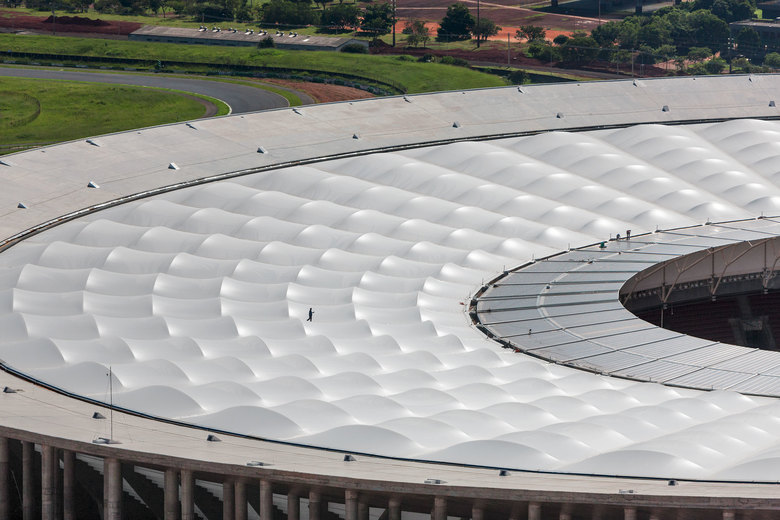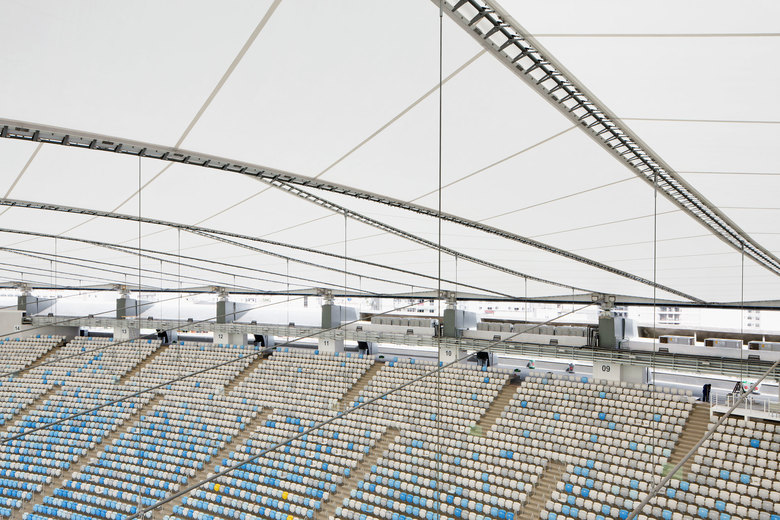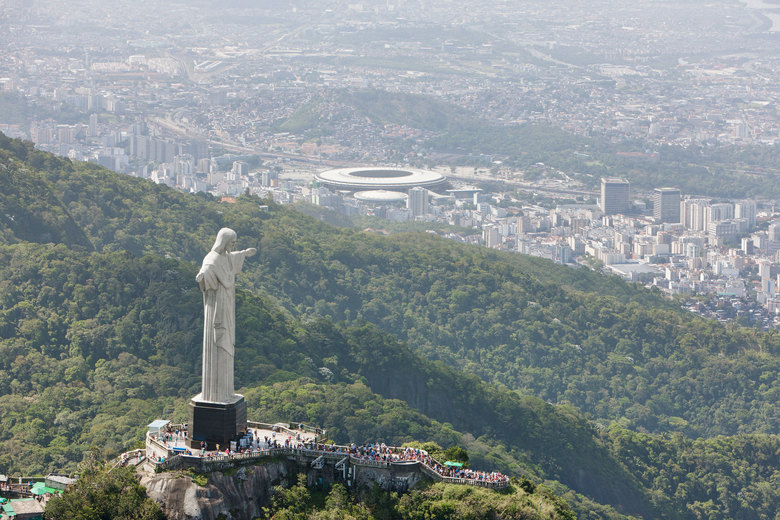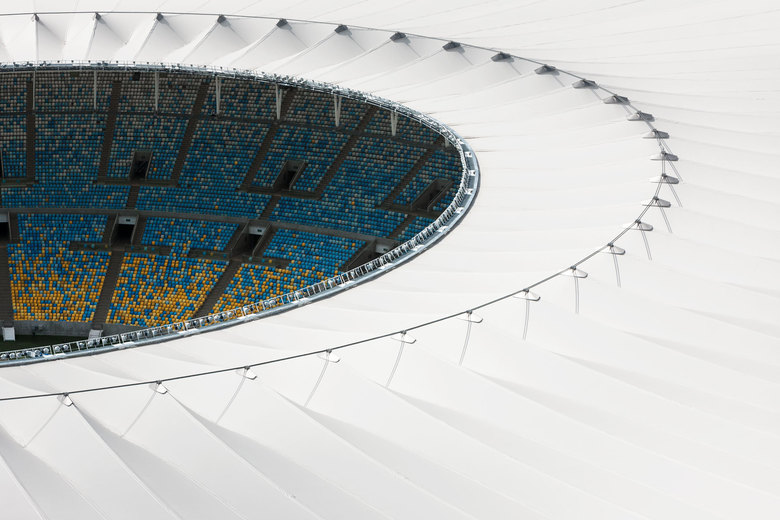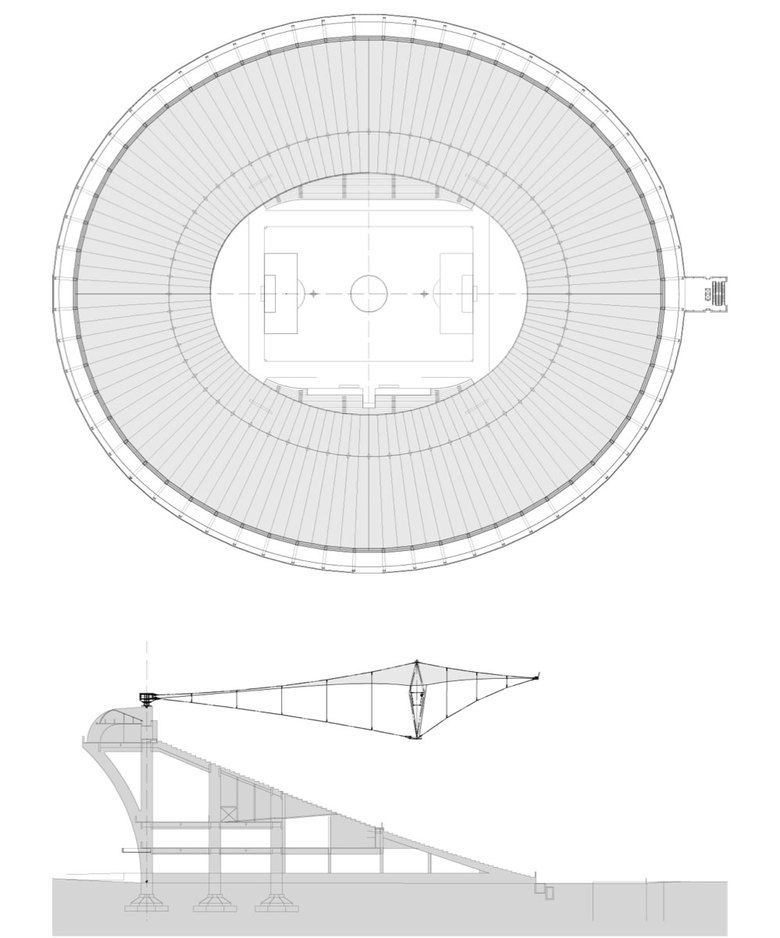Maracanã-Stadion (Estádio Jornalista Mário Filho)
Back to Projects list- Location
- Rio de Janeiro, Brazil
- Year
- 2013
- Client
- EMOP - Rio de Janeiro
200,000 spectators during the 1950 World Cup match Brazil versus Uruguay; 195,000 during the 1963 local derby Fluminense versus Flamengo; Pelé; Ghiggia; Sinatra; John Paul II: These are the names and figures on the source of the Maracanã myth. Probably, there are only very few buildings across the world that have achieved such a splendid reputation within the rather short time of the stadium’s existence. Worldwide, for many football fans this name stands for great moments in sports. "Templo sagrado no país do futebol” the holy temple in the land of football, this how Brazilians call “their” Maracanã. Therefore, we are delighted to be able to contribute to the redevelopment of the stadium for the 2014 World Cup. The crowning is a stunning new roof. Since 2009 the Maracanã Stadium in Rio de Janeiro had been modernised to meet the FIFA requirements for the 2014 World Cup. On 27th April 2013 it was ready for the first match under the new roof. The first official event was the match Brazil versus England on 2nd June. Besides group games and matches in the second stage, also the final of the FIFA World Cup will take place in the Maracanã Stadium. Furthermore, the stadium will be the venue for the opening and closing ceremony, as well as for several sporting events during the 2016 Summer Olympics.
An analysis of the existing stadium structure revealed that the original cantilevered concrete roof had not only become inadequate in terms of its function, but it also lacked sufficient structural safety in the long run. Thus, the scheme includes the existing reinforced concrete columns of the old stadium bowl to support a new lightweight roof structure based on the principle of a horizontal spoked wheel. An innovative option of this system, which features one compression ring and three tension rings made of high-performance materials, facilitates an almost floating roof. Even in regard to sustainability, this solution beats all conventional roof structures. The spoke cables are tightened between the rim of the wheel, called compression ring in structural engineering, and the tension rings allocated at the inner edge of the roof. These are made of high-strength cables. The roof covering consists of a PTFE coated fiberglass membrane, suspended between the radial main axes. Additional radial filet cables stabilize the surface. At the height of the cable- supported props, these filet cables are suspended towards the lower tension ring, and thus generate a minimal turning point which serves as water drainage. This way, the membrane sections attain their characteristic, gracefully curved deltoid shape. The attraction of the scheme derives from the extremely slender inner and outer edge. This emphasizes the deliberately cautious and considerate intervention into the existing structure. Therefore, Rio de Janeiro’s icon has not been significantly changed, but it was rather transformed into a modern landmark to enter a new era. This has been achieved by emphasizing the striking radial structure of the old, as well as of the new structure with its filigree, translucent lightweight cable roof.

